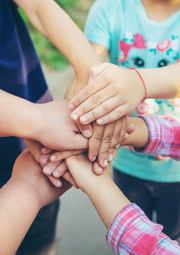Off the Screen, Into the Wilderness: Why Kids Need to Play More Outside
A frequent social media joke pokes fun at how people today blink their eyes in wonder when they finally step outside. Modern folks spend too much time on screens, and it’s children who suffer most of all from our changing lifestyle. All this technology hasn’t freed us — quite the opposite — and many kids grow up never encountering true wilderness.
The trend stops with your children. Here’s why kids need to play more outside and how to get them off their screens and into the wilderness. Even if this wilderness is you own back yard.
It Benefits Their Mental Health
There’s a mental health crisis in America, and the young are not immune. If anything, they’re hit harder than ever. One in six kids between the ages of 2 to 8 have a diagnosed mental or behavioral disorder, and diagnoses of concerns like anxiety and depression get more common as kids get older.
Studies show that spending 120 minutes in a natural setting each week — just two short hours — has significant mental health benefits.
Spending time outdoors benefits your child’s mental health in the following ways.
1. Develop Agency
Agency, a sense that your actions can create positive change, is crucial to mental health. Without it, your child might feel like external controls dictate their life, and they are powerless to influence the outcome.
Most of a child’s life is controlled by adults. However, free outdoor play lets them become anything they desire, if only in their imagination. They’re free to make up the rules to their games and do whatever their creativity drives them, creating a sense of agency along the way.
2. Relieve Stress
Kids aren’t immune to stress, which can impact their physiology much like adults. Multiple studies have shown a link between a traumatic childhood and increased chronic illness as adults. That’s because stress throws multiple body systems out of whack, including your nervous, endocrine, cardiovascular and digestive systems. Gazing at natural scenes can lower stress levels — immersing yourself is even better.
3. Ease Depression
Sunshine is a natural antidepressant. The next time your child feels down, go outside on a sunny day and take a brisk walk together — even for two to three minutes. You can both feel the boost.
It Improves Their Physical Hardiness
Physical fitness matters. It makes it easier to weather life’s storms and survive invariable mishaps. For example, you probably want your little one to learn to swim before taking off on a canoeing adventure, but physical fitness can help them in other scenarios, too.
Active, outdoor play improves physical agility and strength. It also combats the childhood obesity epidemic and creates a healthy love of exercise kids can carry for life.
It Teaches Them Real-Life Skills
Heading outside with your kids gives you the chance to pass on some skills or learn something new together. Whether you go to your own backyard, visit a community garden or travel to a playground, being in nature opens up plenty of learning opportunities.
Playing outside can teach your kids the skills they need to feel confident in their ability to thrive. Consider these activities:
- Gardening: Learning how to grow and preserve your own food is fabulous for developing agency. Younger kids can learn about plant life cycles and how a seed becomes a sprout then a plant.
- Building: Playing outside creates space for older children to learn carpentry, how to repair simple machines, or change oil and tires — life skills that matter. Younger kids can interact with blocks or sand outside to start developing these skills.
- Caring for nature: Time outdoors teaches kids how to live in harmony with nature and to use its resources respectfully. Whether you head out to your backyard oasis, or journey on the path and off the grass at your local park, you’re teaching your kids how to love our planet.
It Connects Them to What Really Matters
It’s easy to lose sight of what really matters in today’s world. Increasing work demands coupled with childcare leave many parents scrambling.
Spending time outdoors with your children creates space to nurture your relationship. You and your child can look back and fondly remember the time you took an entire afternoon to find cloud animals with them and pick buttercups at the playground.
You can’t put a price tag on human connection, but it makes up much of the glue that keeps us going through life’s challenges. Teach your children to cherish nature and time together by turning off the distracting gadgets and spending time outdoors to simply be.
Why Kids Need to Play Outside More
People today spend far too much time on screens. Children aren’t immune, and addiction to gadgets can stifle them developmentally and leave them at risk of mental health problems.
Consider these reasons kids need to play outside more and get yours off the screen and into the wild. Spend a few hours in nature together this weekend, and watch your moods improve and bond grow stronger!
About the Author
 Ava Roman (she/her) is the Managing Editor of Revivalist, a women’s lifestyle magazine that empowers women to live their most authentic life. When Ava is not writing you’ll find her in a yoga class, advocating for her children or whipping up something delicious in the kitchen!
Ava Roman (she/her) is the Managing Editor of Revivalist, a women’s lifestyle magazine that empowers women to live their most authentic life. When Ava is not writing you’ll find her in a yoga class, advocating for her children or whipping up something delicious in the kitchen!









